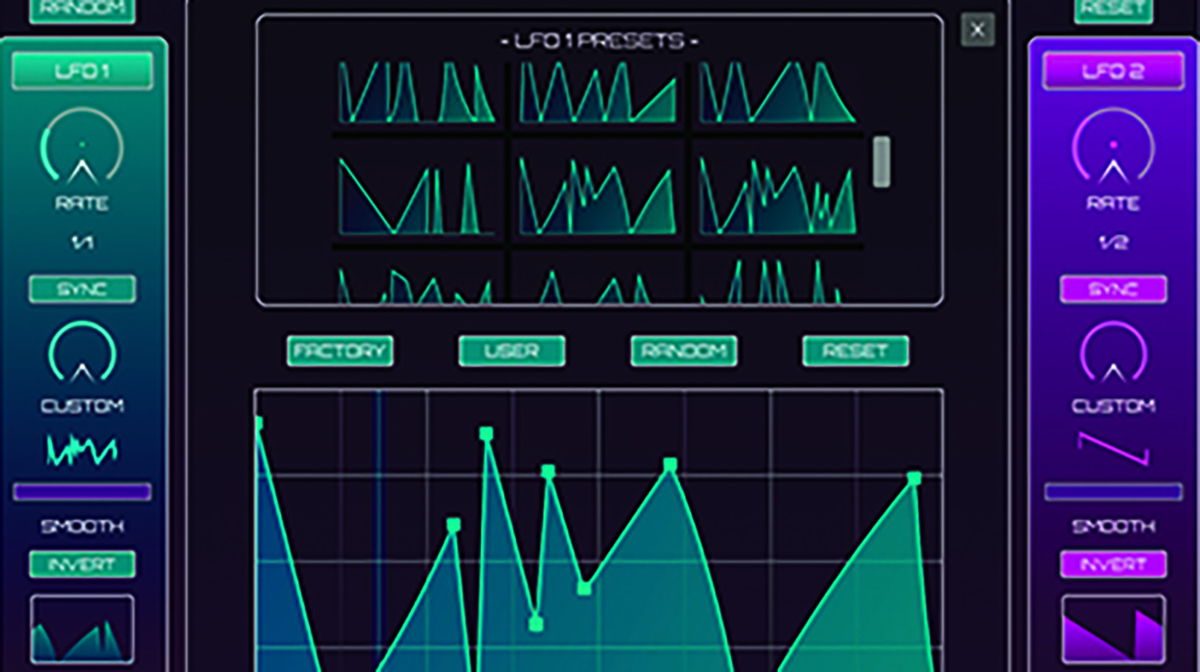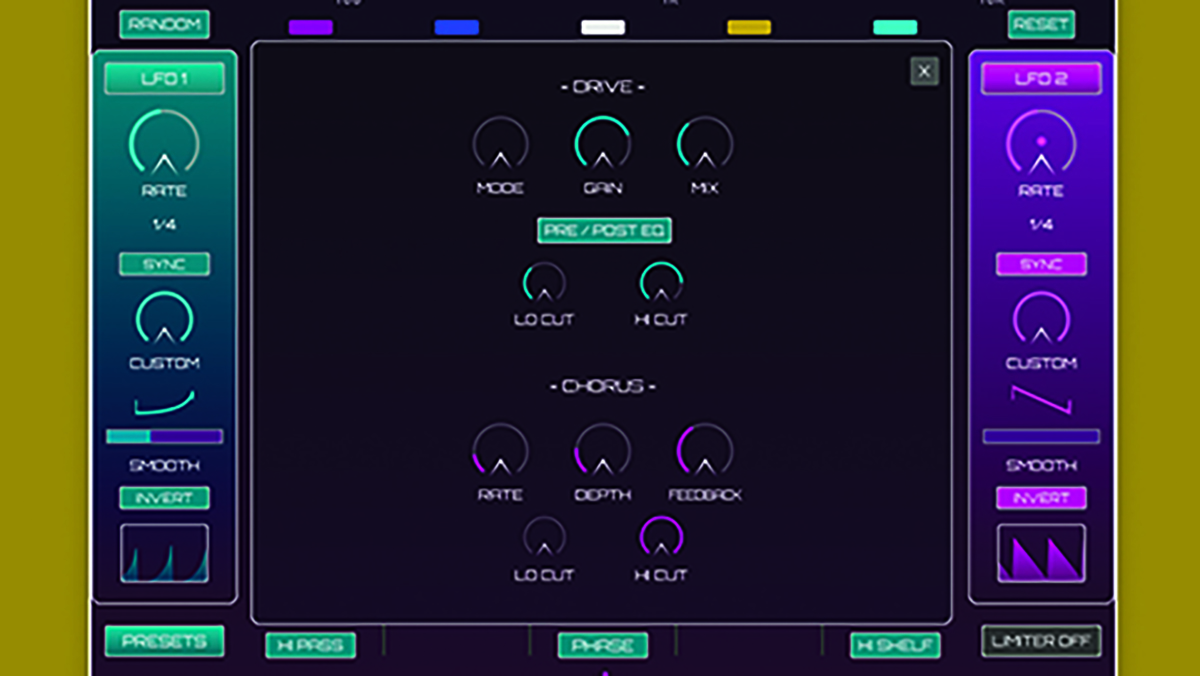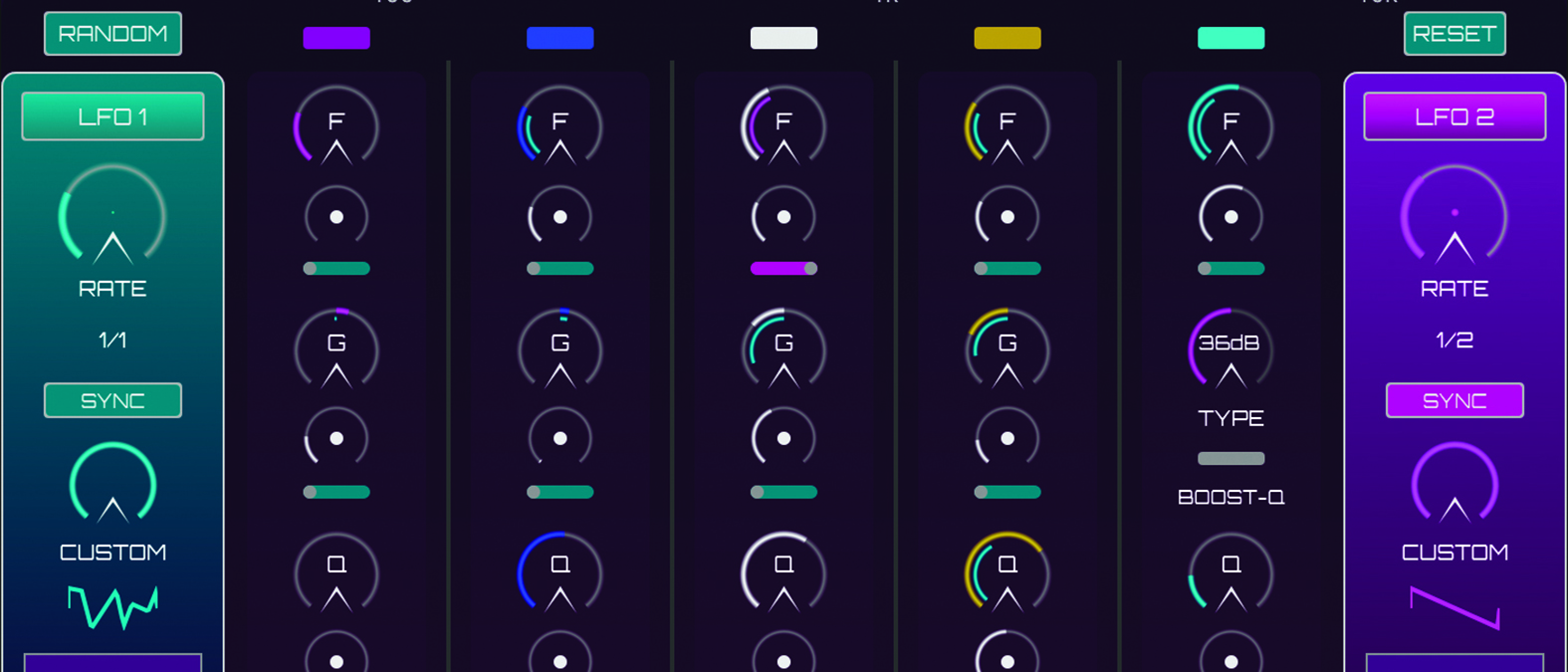MusicRadar Verdict
LFO-EQ-1 is a highly creative design that blurs the line between EQ and auto-filter to deliver a multitude of ear-catching effects.
Pros
- +
Simple interface with a dedicated set of modulation settings for each band parameter.
- +
Twin LFOs allow the application of complex evolving effects.
- +
Massive selection of categorised presets.
Cons
- -
We can’t really find any fault!
MusicRadar's got your back
DHPlugins LFO-EQ-1: What is it?
Format: AU / VST3 / AAX 64 bit
System requirements: 1GB RAM, 1GB HDD SPACE
Operating system: WIN 7 or later, OSX 10.8 or later, M1/M2 ready, 3 licence activations per purchase
Buy at Plugin Boutique
Contemporary EQ plugins tend to fall into two categories, either emulating classic hardware with all its idiosyncrasies or harnessing the power of software to deliver flexibility simply not possible in the analogue domain. LFO-EQ-1 is the latest version of DHPlugins’ modulation EQ, and falls firmly into the latter category, taking a regular EQ format and throwing in LFO and envelope control as well as four effects modules.
The core design is a 5-band EQ with three parametric bands joined by a high-shelf/low-pass filter and a low-shelf/high-pass filter. The middle band also gets an all-pass phaser mode. All five bands offer a full frequency range (20Hz to 20kHz) with +/-24dB gain, individual bypass and wet/dry mix. Parameters can be changed using the controls or via the graphic display nodes, and the display also has an optional frequency analyser.

DHPlugins LFO-EQ-1: Performance and verdict
LFO-EQ is perfectly equipped for many typical EQ tasks. However, where things get interesting is the integration of two LFOs.

• UVI Shade
A highly configurable creative filter and EQ with modulation, pitch tracking and more.
• Minimal Audio Morph EQ
For creative EQ and filtering, this morph-based design is excellent.
Each band gets LFO-related controls including parameter specific choice of LFO (1 or 2) and parameter specific LFO amount settings for frequency, gain, Q and mix. These tie in with the two global LFOs, which you’ll find on either side of the plugin window. Both LFOs offer free and DAW tempo-synced options, with a choice of core shapes, adjustable curve smoothing and invert. Each also includes a custom shape. You edit this in the floating window but you can also choose from over 70 further preset curve shapes and a random option. LFO1 includes one further option, Envelope, which switches it to envelope follower mode.
LFO-EQ-1 has a few further features dotted around the interface, including a full parameter randomiser, full parameter reset, global wet/dry mix, global output gain (with its own LFO amount and selector), and the global frequency knob, which collectively shifts all EQ frequencies. Meanwhile, its four effects (more below) are accessed and blended using the FX-1 and FX-2 controls at the bottom.
LFO-EQ-1 offers a powerful combination of controls, and with two separate syncable LFOs the potential for quite advanced filtering effects is obvious. Thankfully, it comes equipped with over 500 categorised presets that really showcase what it can do. Browser categories include instrument-specific examples (Vocal, Guitar, Drums) alongside qualitative types (Rhythmic, Complex and Subtle) and length-specific groupings (1 Beat, 1 Bar, 2 Bar, and so on). Preset names are also prefixed (E, L and S) to indicate envelope, LFO and static design, and tagged by feature (Pump, Flutter, Sweep, and so on). So, there are loads of ways to find the effect you want. What’s more, as you click through the presets, the Browser page also incorporates four macro controls (LFO1 rate, LFO2 rate, global frequency shift and wet/dry mix), so you can try out broad changes without leaving the page.
We found some fantastic presets. Some are great for adding obvious rhythmic sweeping effects (One, Blessed or Cap, for example), but others deliver more subtle pulsing EQ effects (such as Shake It and Glooper Trooper). There are plenty of pretty frantic options such as Nanobots and Butterfly, and not everything is tempo-synced (Crystals). You can, of course, use it as a regular EQ, and you’ll find plenty of static presets in the instrument categories. Our favourite effects are the long-evolving effects found in the 8-bar folder.
Want all the hottest music and gear news, reviews, deals, features and more, direct to your inbox? Sign up here.

Special effects
To strengthen its creative credentials, LFO-EQ-1 includes four effects. These are split into two groups (FX-1 and FX-2), and their respective floating panels are accessed from the buttons at the bottom of the interface.
The FX-1 panel features Drive and Chorus. The Drive effect includes two core settings. Both add odd harmonics, although the second one has more harmonics and sounds brighter. These options combine with Gain and low/high-cut filters for flexible sound shaping. You can also position the effect after the main EQ for further flexibility. Chorus is a straight-up modulation effect with Depth, Feedback, DAW tempo-synced Rate and low/high-pass filters. The FX-2 panel includes Delay and Reverb. Delay is a DAW tempo-synced design with Feedback and Colour. Meanwhile, Reverb includes Size, Damping and Width. Once again, both effects have low/high-pass filters.
Rounding things off, each effect includes a mix blend at the bottom of the plugin window, so you can fine-tune each effect balance without opening the effects panels.
Conclusion
LFO-EQ-1 is a great idea that’s well-executed, and offers an excellent bridge between traditional EQ and auto-filter plugins. What’s more, the inclusion of effects further enhance its creative capabilities. It’s an excellent addition to the DHPlugins stable at a bargain price.
MusicRadar verdict: LFO-EQ-1 is a highly creative design that blurs the line between EQ and auto-filter to deliver a multitude of ear-catching effects.
DHPlugins LFO-EQ-1: Hands-on demos
DC Breaks
DHPlugins LFO-EQ-1: Specifications
- macOS OSX 10.8 or later. M1/M2 ready.
- Windows 7 or later.
- AU / VST3 / AAX. 64-bit.
- CONTACT: DHPlugins
Jon is a London based platinum award winning mixer, producer, composer and club remixer with a diverse CV that spans dance, pop, rock and music for media. He’s also a long term contributor to MusicRadar's music technology tutorials and reviews. Whether working alone or collaborating he usually handles final mixdowns, so you’ll also find MusicRadar peppered with his handy mixing tips.


